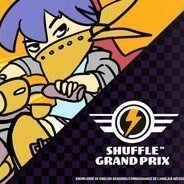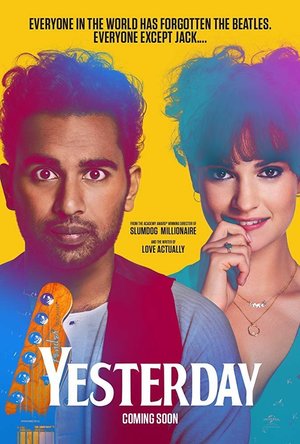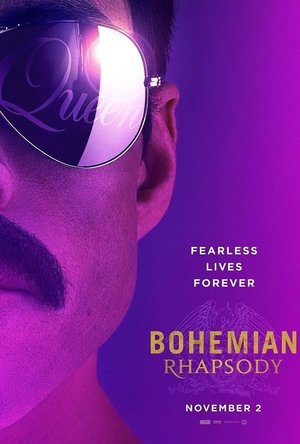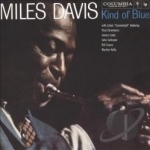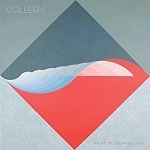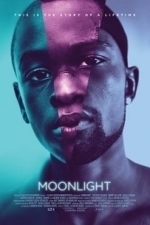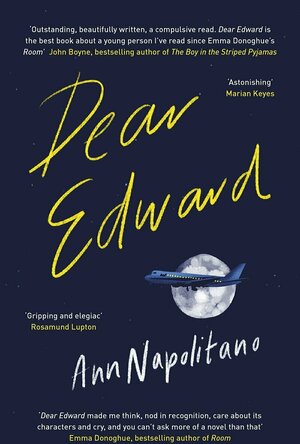Search
Search results
Purple Phoenix Games (2266 KP) rated Shuffle Grand Prix in Tabletop Games
Jun 12, 2019 (Updated Jun 12, 2019)
I very rarely reference video games in my reviews. Mostly because I have never really been a big video gamer. I was always more into RPG style video games (Final Fantasy XI ftw), but some styles of video games I also enjoyed quite a bit. Among those were the battle racing style games of Crash Team Racing and Mario Kart. So much fun not only to race to the finish but also to plant traps and equip weapons to slow your opponents’ progress. Such is your plight as you play Shuffle Grand Prix by new-to-the-board-game-scene publisher Games by Bicycle.
DISCLAIMER: While I will not be delving completely into the rulebook and describing every rule and scenario, I will give you a good idea of how the game plays and what I think of it. -T
Okay let’s setup this game in our minds. Shuffle the large deck of Distance Cards (in denominations of 25, 50, 75, and 100 distance) to form a draw deck. Each player will draft a team of racer and co-pilot, which means taking the racer’s deck and co-pilot’s deck to form their team. Each pilot is a different character with different decks and different special abilities that can be used throughout the game. For example, my first team was the wizard and the musician. Place the driver’s character card on top of the wheel (health) card at maximum wheel strength, and tuck the co-pilot’s card underneath them. You cannot use the co-pilot’s ability until they become the driver (when your main pilot spins out due to your opponents and their dastardly play). Now shuffle the driver’s and co-pilot’s decks together (a la Smash Up) to form your personal draw deck, draw three cards, and you are ready to begin!
On your turn you will flip over the top Distance Card and place it in front of yourself. This is how far you have driven this turn, and ultimately is your VP stack. From there you may play cards from your hand to affect your own cards, the cards of your opponents, or place traps. You may equip items to your car (max 2), switch out equipment, or pass your turn ? This structure continues until there are no more Distance Cards to draw, then the game ends and you count Distance to see who is the winner! I have intentionally left some rules out because they are fun to discover and play – like making your opponent spin out (for trophies), nerfing your opponents, card combo play, etc.
Components: this game is relatively light on components as it is a large number of playing cards and a collection of trophy chits. The chits are good quality, and were definitely too numerous for our plays. The cards are of great quality, which is what you expect from Bicycle, the playing card giant. The art in this game is VERY quirky. I wouldn’t say the art is amazing, but it’s fun and fits the theme. Think Munchkin art. In fact, think of this game as a whole as a combination of CTR/Mario Kart meets Munchkin.
Overall, I really dig this game. It’s pretty fast-playing, though those AP-prone players will hold up the game a bit on their turns. The rules are light, the game play is really fun, and the flavor text on the cards is quite humorous. I thought out loud as we were playing that this is a replacement for Munchkin for me, and I like Munchkin a lot. The take-that/screw-your-neighbor aspect is certainly there, but even when you pile on it doesn’t seem to slow you down so much that you can no longer do much on your turn. I appreciate that. The eight provided playable character decks feels like I can play this game for a really long time with different combinations and enjoy it each time. So for the ease of play, enjoyment of play, different combos we are excited to try, and absolute silliness, Purple Phoenix Games gives this one a bashin’ 14 / 18. Check it out!
https://purplephoenixgames.wordpress.com/2019/06/06/shuffle-grand-prix-review/
DISCLAIMER: While I will not be delving completely into the rulebook and describing every rule and scenario, I will give you a good idea of how the game plays and what I think of it. -T
Okay let’s setup this game in our minds. Shuffle the large deck of Distance Cards (in denominations of 25, 50, 75, and 100 distance) to form a draw deck. Each player will draft a team of racer and co-pilot, which means taking the racer’s deck and co-pilot’s deck to form their team. Each pilot is a different character with different decks and different special abilities that can be used throughout the game. For example, my first team was the wizard and the musician. Place the driver’s character card on top of the wheel (health) card at maximum wheel strength, and tuck the co-pilot’s card underneath them. You cannot use the co-pilot’s ability until they become the driver (when your main pilot spins out due to your opponents and their dastardly play). Now shuffle the driver’s and co-pilot’s decks together (a la Smash Up) to form your personal draw deck, draw three cards, and you are ready to begin!
On your turn you will flip over the top Distance Card and place it in front of yourself. This is how far you have driven this turn, and ultimately is your VP stack. From there you may play cards from your hand to affect your own cards, the cards of your opponents, or place traps. You may equip items to your car (max 2), switch out equipment, or pass your turn ? This structure continues until there are no more Distance Cards to draw, then the game ends and you count Distance to see who is the winner! I have intentionally left some rules out because they are fun to discover and play – like making your opponent spin out (for trophies), nerfing your opponents, card combo play, etc.
Components: this game is relatively light on components as it is a large number of playing cards and a collection of trophy chits. The chits are good quality, and were definitely too numerous for our plays. The cards are of great quality, which is what you expect from Bicycle, the playing card giant. The art in this game is VERY quirky. I wouldn’t say the art is amazing, but it’s fun and fits the theme. Think Munchkin art. In fact, think of this game as a whole as a combination of CTR/Mario Kart meets Munchkin.
Overall, I really dig this game. It’s pretty fast-playing, though those AP-prone players will hold up the game a bit on their turns. The rules are light, the game play is really fun, and the flavor text on the cards is quite humorous. I thought out loud as we were playing that this is a replacement for Munchkin for me, and I like Munchkin a lot. The take-that/screw-your-neighbor aspect is certainly there, but even when you pile on it doesn’t seem to slow you down so much that you can no longer do much on your turn. I appreciate that. The eight provided playable character decks feels like I can play this game for a really long time with different combinations and enjoy it each time. So for the ease of play, enjoyment of play, different combos we are excited to try, and absolute silliness, Purple Phoenix Games gives this one a bashin’ 14 / 18. Check it out!
https://purplephoenixgames.wordpress.com/2019/06/06/shuffle-grand-prix-review/
Cynthia Armistead (17 KP) rated Mindhealer (The Watchers, #5) in Books
Mar 1, 2018
<p>I'm actually reviewing all five of the Watcher books. They're quite short—novella length, really—and very much interrelated (especially the first four). I read all of them in about a day and a half, despite doing other things. I do advise taking them all in row, which is the equivalent of reading one "normal" novel.</p>
<p>
<a target="_blank" href="http://www.goodreads.com/book/show/268186.Dark_Watcher">Dark Watcher</a> opens in Santiago City (aka Saint City), with a quartet of witches. Mindhealer is the only book that takes place outside of Santiago City, which seems to be the primary setting for all of Saintcrow's novels (from what I've read in the descriptions). </p>
<p>
Theodora, earth witch and healer, runs the Cauldron, an occult book and supply store. Mariamne Niege (water witch, prognosticator) and Elise Nicholson (fire witch) work for her in addition to being, respectively, a graduate student and a musician. Suzanne (air witch, I don't believe we ever learn her last name) is Elise's foster mother and their teacher, something of a high priestess to the little group.</p>
<p>The four women know that they're psychic and that "magick" is real. They don't know that they are "Lightbringers," that there are groups and creatures in the world that hunt them, or that a group called Circle Lightfall trains and sends out "Watchers" to protect (and recruit) Lightbringers in order to counterbalance the darkness in the world.
</p>
<p>Watchers are formerly wicked men with some psychic talents who have been given a chance to redeem themselves. They are bonded with a tanak, a dark symbiote that gives them supernatural speed, strength, healing power, and longevity. The tanak also makes it possible for them to sense darkness, but it causes the Watchers to experience pain whenever they're around Lightbringers.
</p>
<p>The catch is that for every Watcher, there is one Witch whose presence and touch will be intensely pleasurable instead of torturous. The hope of finding that one witch is what keeps each Watcher going, fighting and surviving horrific wounds for one chance at happiness.
</p>
<p>The use of the tired soulmate meme (though that specific word is never used) is annoying, and it detracts from what is otherwise a fairly original concept. The fact that there are only male Watchers, though there are a few (mostly queer) male lightbringers, is a bigger disappointment. The reasoning given is that women do not have the viciousness to kill without hesitation. That's simplistic, at best. Male lightbringers are also painted as weaker than females, and that, in combination with the pedestal upon which Watchers place Lightbringers, unbalances the novels.
</p>
<p>Theodora is the main subject of the first book. Mariamne is the focus of <a target="_blank" href="http://www.goodreads.com/book/show/268188.Storm_Watcher">Storm Watcher</a>. <a target="_blank" href="http://www.goodreads.com/book/show/268189.Fire_Watcher">Fire Watcher</a>, of course, is primarily about Elise. We meet a new air witch, Anya Harris, in <a target="_blank" href="http://www.goodreads.com/book/show/268190.Cloud_Watcher">Cloud Watcher</a>. And finally, Mindhealer is about Caro Robbins, whose brother plays a small part in Fire Watcher.
</p>
<p>The books should certainly be classified as romances first, although they do have very strong paranormal themes. Every book follows the classic romance novel formula. The fact that I kept reading despite my dislike of romances is a testament to Saintcrow's talent.
</p>
<p>I suspect that the author either is pagan, or is very familiar with pagan practices. The rituals in each novel are nicely done, and I wouldn't be surprised to hear people using some of the invocations used in Circle.</p>
<p>I do have to propose the Watcher drinking game. Take a shot every time there's any mention of treating a Watcher "dreadfully," and every time a Watcher moans about how unworthy he is to be in the presence of a Lightbringer. You'll be past noticing any formulae in no time!</p>
<p>
<a target="_blank" href="http://www.goodreads.com/book/show/268186.Dark_Watcher">Dark Watcher</a> opens in Santiago City (aka Saint City), with a quartet of witches. Mindhealer is the only book that takes place outside of Santiago City, which seems to be the primary setting for all of Saintcrow's novels (from what I've read in the descriptions). </p>
<p>
Theodora, earth witch and healer, runs the Cauldron, an occult book and supply store. Mariamne Niege (water witch, prognosticator) and Elise Nicholson (fire witch) work for her in addition to being, respectively, a graduate student and a musician. Suzanne (air witch, I don't believe we ever learn her last name) is Elise's foster mother and their teacher, something of a high priestess to the little group.</p>
<p>The four women know that they're psychic and that "magick" is real. They don't know that they are "Lightbringers," that there are groups and creatures in the world that hunt them, or that a group called Circle Lightfall trains and sends out "Watchers" to protect (and recruit) Lightbringers in order to counterbalance the darkness in the world.
</p>
<p>Watchers are formerly wicked men with some psychic talents who have been given a chance to redeem themselves. They are bonded with a tanak, a dark symbiote that gives them supernatural speed, strength, healing power, and longevity. The tanak also makes it possible for them to sense darkness, but it causes the Watchers to experience pain whenever they're around Lightbringers.
</p>
<p>The catch is that for every Watcher, there is one Witch whose presence and touch will be intensely pleasurable instead of torturous. The hope of finding that one witch is what keeps each Watcher going, fighting and surviving horrific wounds for one chance at happiness.
</p>
<p>The use of the tired soulmate meme (though that specific word is never used) is annoying, and it detracts from what is otherwise a fairly original concept. The fact that there are only male Watchers, though there are a few (mostly queer) male lightbringers, is a bigger disappointment. The reasoning given is that women do not have the viciousness to kill without hesitation. That's simplistic, at best. Male lightbringers are also painted as weaker than females, and that, in combination with the pedestal upon which Watchers place Lightbringers, unbalances the novels.
</p>
<p>Theodora is the main subject of the first book. Mariamne is the focus of <a target="_blank" href="http://www.goodreads.com/book/show/268188.Storm_Watcher">Storm Watcher</a>. <a target="_blank" href="http://www.goodreads.com/book/show/268189.Fire_Watcher">Fire Watcher</a>, of course, is primarily about Elise. We meet a new air witch, Anya Harris, in <a target="_blank" href="http://www.goodreads.com/book/show/268190.Cloud_Watcher">Cloud Watcher</a>. And finally, Mindhealer is about Caro Robbins, whose brother plays a small part in Fire Watcher.
</p>
<p>The books should certainly be classified as romances first, although they do have very strong paranormal themes. Every book follows the classic romance novel formula. The fact that I kept reading despite my dislike of romances is a testament to Saintcrow's talent.
</p>
<p>I suspect that the author either is pagan, or is very familiar with pagan practices. The rituals in each novel are nicely done, and I wouldn't be surprised to hear people using some of the invocations used in Circle.</p>
<p>I do have to propose the Watcher drinking game. Take a shot every time there's any mention of treating a Watcher "dreadfully," and every time a Watcher moans about how unworthy he is to be in the presence of a Lightbringer. You'll be past noticing any formulae in no time!</p>
Lee (2222 KP) rated Yesterday (2019) in Movies
Jun 20, 2019
Rocketman recently did a great job of reminding us just how good Elton John songs are, making us want to dust off our vinyl/plastic/streaming service collection and reacquaint ourselves with his back catalogue all over again. Last year the Bohemian Rhapsody movie did a similar thing for the music of Queen and now it's the turn of The Beatles, with Yesterday. Written by Richard Curtis, and directed by Danny Boyle, Yesterday doesn't go down the musical/biopic route, instead taking classic Beatles songs and weaving them into a high concept romantic comedy.
Yesterday follows struggling musician Jack (Himesh Patel) and his long-term best friend/manager Ellie (Lily James). Gigging in pubs is getting him nowhere and he's resigned himself to the fact that he might have to give it all up and return to teaching. He lands a spot on the Suffolk stage at Latitude festival, expecting it to be his big break, but only his friends and a handful of bored kids show up to watch him play.
But then, while riding home on his bike that night, something mysterious happens. An unexplained 12 second power cut hits the entire globe and in the resulting chaos, Jack is struck by a bus and flung from his bike. When he awakes in hospital, bruised and missing a couple of front teeth, he plays a Beatles song to Ellie and his friends, who all think it's amazing, claiming to have never heard of the song before, or even The Beatles. After a bit of Googling, it becomes clear that The Beatles never actually existed, and only Jack is able to remember them. There are a few other things which crop up as we go along, that also turn out never to have existed, in what is a bit of a running gag throughout the movie.
Jack immediately realises his chance of success at last and sets about trying to remember as many of The Beatles songs and music as he can. His friends love the new songs, and there's a hilarious scene where he tries to introduce his parents to a Beatles song too (The Kumars, Sanjeev Bhaskar and Meera Syal on top form here), but it's still not really working out for him at the pub gigs and weddings where he performs them. It's only when he gets the chance to professionally lay down his tracks, and starts handing out free CDs to customers at the store he works at, that things really take off for Jack, drawing the attentions of none other than Mr Ed Sheeran. Ed has fun sending himself up, and actually features quite heavily in the movie, particularly in these early stages - turning up at Jack's house, asking him to come and support him on tour, arranging a 10 minute songwriting challenge between him and Jack. I'm not really a fan of Ed Sheeran but he actually turns out to be responsible for a lot of the movies humour as he eventually concedes that Jack is a better songwriter than him.
As Jack starts to hit the big time, traveling to LA and being managed by Ed's manager Debra (Kate McKinnon), we hit a bit of a mid-movie slump. Luckily though, Himesh Patel portrays Jack with such a relatable and likeable charm - his bewilderment and frustrations at the ridiculousness of the music industry, not to mention the building pressures of living the lie that his success has come from using someone else's work, guides us nicely through the slower moments of the movie. The romance part of the story continues to play out too, with Jack and Ellie both clearly loving each other for 20 years now, but with neither of them committing to taking it further. Lily James is once again wonderful, despite being very underused in this role, and it's the love story element of the movie which isn't quite as strong as the rest of it.
The movie does manage to pull things together nicely for the final act, resolving the unease and tension that dominates much of the movie. It could have done with a bit more rom and a bit more com, but is still an enjoyable movie and a perfect reminder of just how great The Beatles are.
Yesterday follows struggling musician Jack (Himesh Patel) and his long-term best friend/manager Ellie (Lily James). Gigging in pubs is getting him nowhere and he's resigned himself to the fact that he might have to give it all up and return to teaching. He lands a spot on the Suffolk stage at Latitude festival, expecting it to be his big break, but only his friends and a handful of bored kids show up to watch him play.
But then, while riding home on his bike that night, something mysterious happens. An unexplained 12 second power cut hits the entire globe and in the resulting chaos, Jack is struck by a bus and flung from his bike. When he awakes in hospital, bruised and missing a couple of front teeth, he plays a Beatles song to Ellie and his friends, who all think it's amazing, claiming to have never heard of the song before, or even The Beatles. After a bit of Googling, it becomes clear that The Beatles never actually existed, and only Jack is able to remember them. There are a few other things which crop up as we go along, that also turn out never to have existed, in what is a bit of a running gag throughout the movie.
Jack immediately realises his chance of success at last and sets about trying to remember as many of The Beatles songs and music as he can. His friends love the new songs, and there's a hilarious scene where he tries to introduce his parents to a Beatles song too (The Kumars, Sanjeev Bhaskar and Meera Syal on top form here), but it's still not really working out for him at the pub gigs and weddings where he performs them. It's only when he gets the chance to professionally lay down his tracks, and starts handing out free CDs to customers at the store he works at, that things really take off for Jack, drawing the attentions of none other than Mr Ed Sheeran. Ed has fun sending himself up, and actually features quite heavily in the movie, particularly in these early stages - turning up at Jack's house, asking him to come and support him on tour, arranging a 10 minute songwriting challenge between him and Jack. I'm not really a fan of Ed Sheeran but he actually turns out to be responsible for a lot of the movies humour as he eventually concedes that Jack is a better songwriter than him.
As Jack starts to hit the big time, traveling to LA and being managed by Ed's manager Debra (Kate McKinnon), we hit a bit of a mid-movie slump. Luckily though, Himesh Patel portrays Jack with such a relatable and likeable charm - his bewilderment and frustrations at the ridiculousness of the music industry, not to mention the building pressures of living the lie that his success has come from using someone else's work, guides us nicely through the slower moments of the movie. The romance part of the story continues to play out too, with Jack and Ellie both clearly loving each other for 20 years now, but with neither of them committing to taking it further. Lily James is once again wonderful, despite being very underused in this role, and it's the love story element of the movie which isn't quite as strong as the rest of it.
The movie does manage to pull things together nicely for the final act, resolving the unease and tension that dominates much of the movie. It could have done with a bit more rom and a bit more com, but is still an enjoyable movie and a perfect reminder of just how great The Beatles are.
Lucy Buglass (45 KP) rated Bohemian Rhapsody (2018) in Movies
Jun 20, 2019
An honest, captivating and respectful biopic
Biopics are not easy to perfect and when you’re dealing with an iconic figure such as Freddie Mercury, it becomes even harder. When this film was announced it seemed natural to feel a little bit of apprehension, because could anyone really portray Freddie? Who could bring him to life on screen before thousands of fans? Thankfully, for me at least, my worries were soon quenched as soon as I began to watch it. I thought was a stunning film and I have no problem admitting that brought tears to my eyes on several occasions.
Rami Malek was an excellent choice to portray Freddie, to the point where I found myself believing I was watching the man himself. His stage presence especially was spot on and the live performances were simply stunning to watch, especially with surround sound. I felt transported, part of the crowd, and it was such a special moment to share with the rest of the cinema. We become part of different times and places in a matter of minutes, giving you an idea of just how globally successful and adored Queen were. Despite the film’s main focus being Freddie, the supporting roles of the rest of the band were fantastic too, and I have so much praise for Gwilym Lee, Ben Hardy and Joseph Mazzello for their performances.
Freddie dealt with a lot of discrimination during his career, particularly due to his race, sexuality and flamboyant personality. The film chose to portray these issues honestly, because pretending they didn’t exist would be an insult. When Freddie first starts performing with the rest of Queen, he’s greeted with questions such as “Who’s the P***?”, which for a modern audience is a terrible racial slur that I don’t even feel comfortable writing here. But for a Indian-British Parsi musician performing to a largely white audience in the ’70s, this word would have been used a lot. I feel it was important for the filmmakers to shed light on this as it provides context into Freddie’s upbringing and life that some may not have known about, including his real name: Farrokh Bulsara.
In terms of his sexuality, the film uses the role of the press to exploit and make a big deal about his personal relationships. The press conference scene was particularly uncomfortable as he’s bombarded with inappropriate questions instead of focusing on Queen and their music. He was constantly criticised in papers and magazines for simply being himself, and that’s a heartbreaking truth that Bohemian Rhapsody really hammers home. His long-term relationship with Mary Austin is also focused on throughout, and how that broke down but they still remained in touch. It’s a complex part of his life that the film does well to explore in just over 2 hours.
It’s not all bleak, and although these dark truths are explored, the film is fundamentally a celebration of Freddie’s life and extraordinary talent. Several Queen songs are present throughout the film and we even see the writing process behind some of them, my favourite being the creation of We Will Rock You in which they wanted the audience to play along with them through stomps and claps. The birth of Bohemian Rhapsody is comical in nature and received a lot of backlash at the time, but as we know, has since gone on to become an iconic song we all know the lyrics to.
Even in Freddie’s final days, after he was diagnosed with AIDS, the film encourages us to celebrate their music and make the most of the time Freddie has left, which is exactly what he himself wanted to do. I can’t think of a more respectful and considerate way to show it than that.
I could probably write an entire essay about just how much I thought Bohemian Rhapsody got right, but hopefully I’ve managed to condense my thoughts somewhat. This is a film you simply must experience for yourself, at least once.
https://lucygoestohollywood.com/2018/11/14/bohemian-rhapsody-an-honest-captivating-and-respectful-biopic/
Rami Malek was an excellent choice to portray Freddie, to the point where I found myself believing I was watching the man himself. His stage presence especially was spot on and the live performances were simply stunning to watch, especially with surround sound. I felt transported, part of the crowd, and it was such a special moment to share with the rest of the cinema. We become part of different times and places in a matter of minutes, giving you an idea of just how globally successful and adored Queen were. Despite the film’s main focus being Freddie, the supporting roles of the rest of the band were fantastic too, and I have so much praise for Gwilym Lee, Ben Hardy and Joseph Mazzello for their performances.
Freddie dealt with a lot of discrimination during his career, particularly due to his race, sexuality and flamboyant personality. The film chose to portray these issues honestly, because pretending they didn’t exist would be an insult. When Freddie first starts performing with the rest of Queen, he’s greeted with questions such as “Who’s the P***?”, which for a modern audience is a terrible racial slur that I don’t even feel comfortable writing here. But for a Indian-British Parsi musician performing to a largely white audience in the ’70s, this word would have been used a lot. I feel it was important for the filmmakers to shed light on this as it provides context into Freddie’s upbringing and life that some may not have known about, including his real name: Farrokh Bulsara.
In terms of his sexuality, the film uses the role of the press to exploit and make a big deal about his personal relationships. The press conference scene was particularly uncomfortable as he’s bombarded with inappropriate questions instead of focusing on Queen and their music. He was constantly criticised in papers and magazines for simply being himself, and that’s a heartbreaking truth that Bohemian Rhapsody really hammers home. His long-term relationship with Mary Austin is also focused on throughout, and how that broke down but they still remained in touch. It’s a complex part of his life that the film does well to explore in just over 2 hours.
It’s not all bleak, and although these dark truths are explored, the film is fundamentally a celebration of Freddie’s life and extraordinary talent. Several Queen songs are present throughout the film and we even see the writing process behind some of them, my favourite being the creation of We Will Rock You in which they wanted the audience to play along with them through stomps and claps. The birth of Bohemian Rhapsody is comical in nature and received a lot of backlash at the time, but as we know, has since gone on to become an iconic song we all know the lyrics to.
Even in Freddie’s final days, after he was diagnosed with AIDS, the film encourages us to celebrate their music and make the most of the time Freddie has left, which is exactly what he himself wanted to do. I can’t think of a more respectful and considerate way to show it than that.
I could probably write an entire essay about just how much I thought Bohemian Rhapsody got right, but hopefully I’ve managed to condense my thoughts somewhat. This is a film you simply must experience for yourself, at least once.
https://lucygoestohollywood.com/2018/11/14/bohemian-rhapsody-an-honest-captivating-and-respectful-biopic/
Mick Hucknall recommended Kind of Blue by Miles Davis in Music (curated)

SingTrue: Learn to sing in tune, pitch perfect
Music and Education
App
SingTrue can teach anybody to sing in perfect tune. Even if you think you're tone deaf! ~~ Selected...
Bob Mann (459 KP) rated Moonlight (2016) in Movies
Sep 29, 2021
Waxing or Waning?
Seldom do I go to see a movie where I know so little about the plot as this one. I knew it was a “coming of age” drama about a young man growing up in a black neighbourhood in Miami. Period. That ignorance was bliss (so that’s the way this review will stay: I will avoid my usual high-level summary here). For there are twists in this story that you don’t see coming, and moments of such dramatic force that they are cinematically searing.
Playing the young man, Chiron, over three stages of his life are the actors Alex Hibbert, Ashton Sanders and Trevante Rhodes. However, Mahershala Ali, who plays Juan – the drug dealer with a heart – has been the one with all the awards visibility (having this week won the Screen Actors Guild Supporting Actor award, as well as being within the ensemble cast award for the upcoming “Hidden Numbers”). For the avoidance of doubt, Ali and all of these other actors are excellent, as is Jharrel Jerome (in his feature film debut) as Chiron’s 16-year old friend Kevin. But the performance that really spoke to me was that of Ashton Sanders, who has both an uplifting and heartbreaking role as the “middle” Chiron and delivers it supremely well. A real breakout role for him.
Also shining with a dramatic and extremely emotional performance is London’s own Naomie Harris (“Spectre“), justifiably nominated for a Supporting Actress Oscar. Unlike last year’s insipid and dull “Our Kind of Traitor“, where she was given criminally little to do, here she is blisteringly real as a caring mother spiralling down an addiction plug-hole. A career best.
Grammy-nominated musician Janelle Monáe, in her feature film debut, is also eminently watchable alongside Mahershala Ali as Juan’s girlfriend Teresa.
Above all, this powerful ensemble is the best evidence possible that the diversity arguments all over last year’s Oscars were 100% correct. These are all indisputably realistic performances by black actors that must surely move viewers regardless of their colour or creed.
The film has eight Oscar nominations, and I definitely agree with the acting nominations to Maharhala Ali and Naomie Harris. I’d also agree with the award for music to Nicolas Britell (“The Big Short”) which is astonishingly eclectic and jarringly appropriate to the story that unfolds. I could even go along with the Best Film Editing nomination, although I am hardly an expert in the subject.
The remaining nominations are for Best Picture, Best Director (Barry Jenkins), Best Writing Adapted Screenplay (also Barry Jenkins) and Best Cinematography (James Laxton). However, here my opinion diverges with the Academy and – I suspect – many critics. Yes, this is a really engrossing film with a fine and surprisingly non-standard Hollywood ending. It is certainly well worth watching, but is it a top film of the year? No, I don’t think so. There are some aspects of the film that just plain irritated me.
Firstly, the camera work is frequently of the hand-held variety, particularly in the first half of the film, that leads to a serious case of seasickness if you are sitting anywhere other than the back row of the cinema.
More crucially for me, the film introduces two fantastic and atypical characters, but then – inexplicably – the script just unceremoniously dumps them with hardly any further reference made. I found that enormously frustrating and mystifying and spent the rest of the film waiting for a closure that never came.
There is also enormously pervasive use of the “N-word”, right from the opening music track. I appreciate this is probably perfectly appropriate to the ‘hood that the characters occupy, but the continual usage is shocking (at least to a white audience). It is probably designed to shock, but after a while the shock wears off and it becomes more tiresome than offensive.
Based on all the Oscar hype then, this was a bit of a disappointment. But that view is purely relative to all of the great Oscar Best Film candidates I’ve seen in the last few weeks. It is still a very interesting film due to the story that goes off in a novel and surprising direction, and one that is worthy of your movie dollar investment.
Playing the young man, Chiron, over three stages of his life are the actors Alex Hibbert, Ashton Sanders and Trevante Rhodes. However, Mahershala Ali, who plays Juan – the drug dealer with a heart – has been the one with all the awards visibility (having this week won the Screen Actors Guild Supporting Actor award, as well as being within the ensemble cast award for the upcoming “Hidden Numbers”). For the avoidance of doubt, Ali and all of these other actors are excellent, as is Jharrel Jerome (in his feature film debut) as Chiron’s 16-year old friend Kevin. But the performance that really spoke to me was that of Ashton Sanders, who has both an uplifting and heartbreaking role as the “middle” Chiron and delivers it supremely well. A real breakout role for him.
Also shining with a dramatic and extremely emotional performance is London’s own Naomie Harris (“Spectre“), justifiably nominated for a Supporting Actress Oscar. Unlike last year’s insipid and dull “Our Kind of Traitor“, where she was given criminally little to do, here she is blisteringly real as a caring mother spiralling down an addiction plug-hole. A career best.
Grammy-nominated musician Janelle Monáe, in her feature film debut, is also eminently watchable alongside Mahershala Ali as Juan’s girlfriend Teresa.
Above all, this powerful ensemble is the best evidence possible that the diversity arguments all over last year’s Oscars were 100% correct. These are all indisputably realistic performances by black actors that must surely move viewers regardless of their colour or creed.
The film has eight Oscar nominations, and I definitely agree with the acting nominations to Maharhala Ali and Naomie Harris. I’d also agree with the award for music to Nicolas Britell (“The Big Short”) which is astonishingly eclectic and jarringly appropriate to the story that unfolds. I could even go along with the Best Film Editing nomination, although I am hardly an expert in the subject.
The remaining nominations are for Best Picture, Best Director (Barry Jenkins), Best Writing Adapted Screenplay (also Barry Jenkins) and Best Cinematography (James Laxton). However, here my opinion diverges with the Academy and – I suspect – many critics. Yes, this is a really engrossing film with a fine and surprisingly non-standard Hollywood ending. It is certainly well worth watching, but is it a top film of the year? No, I don’t think so. There are some aspects of the film that just plain irritated me.
Firstly, the camera work is frequently of the hand-held variety, particularly in the first half of the film, that leads to a serious case of seasickness if you are sitting anywhere other than the back row of the cinema.
More crucially for me, the film introduces two fantastic and atypical characters, but then – inexplicably – the script just unceremoniously dumps them with hardly any further reference made. I found that enormously frustrating and mystifying and spent the rest of the film waiting for a closure that never came.
There is also enormously pervasive use of the “N-word”, right from the opening music track. I appreciate this is probably perfectly appropriate to the ‘hood that the characters occupy, but the continual usage is shocking (at least to a white audience). It is probably designed to shock, but after a while the shock wears off and it becomes more tiresome than offensive.
Based on all the Oscar hype then, this was a bit of a disappointment. But that view is purely relative to all of the great Oscar Best Film candidates I’ve seen in the last few weeks. It is still a very interesting film due to the story that goes off in a novel and surprising direction, and one that is worthy of your movie dollar investment.
Ivana A. | Diary of Difference (1171 KP) rated Dear Edward in Books
Feb 3, 2020
<a href="https://amzn.to/2Wi7amb">Wishlist</a>; | <a
<a href="https://diaryofdifference.com/">Blog</a>; | <a href="https://www.facebook.com/diaryofdifference/">Facebook</a>; | <a href="https://twitter.com/DiaryDifference">Twitter</a>; | <a href="https://www.instagram.com/diaryofdifference/">Instagram</a>; | <a href="https://www.pinterest.co.uk/diaryofdifference/pins/">Pinterest</a>;
<img src="https://diaryofdifference.com/wp-content/uploads/2019/11/Book-Review-Banner-28.png"/>;
<b><i>Dear Edward by Ann Napolitano is one of the few books that instantly captures your heart, then shatters it into hundred pieces and teaches you many life lessons at the same time.</i></b>
"A reporter holds up a copy of The New York Times to a camera, to show a huge block headline, the kind normally reserved for presidential elections and moonwalks. It reads:
191 DIE IN PLANE CRASH; 1 SURVIVOR
The relatives have only one question when the press briefing comes to close; they all lean toward it like a window in a dark room:
"How is the boy?"</i>
Dear Edward features a boy called Edward, who is flying with his family to move across states. This is their chance of a new life, a brand new start. When the plane crashes, he is the only survivor.
The author tells the story through two different timelines; during the flight and after the plane crash. We follow Edward's life and how he is coping with the loss of everything he knew. We also see how he is struggling to cope with the unwanted celebrity title he has now.
I have always been intrigued by planes and plane crashes. I used to watch every single episode of the documentary on Discovery Channel back in the days. And today, I like to listen to the Plane Crash Podcast by Michael Bauer. I have had some bad experiences while flying, and have always wanted to understand what exactly happens when a plane crashes, and what aviation does to prevent this from happening in the future. This book contains amazing details about the crash, and my hidden mystery person inside me was deeply satisfied by all those pilot dialogues and explanations.
Edward's grief and growing up journey is so painful. He survived, but everyone he loved and cared about in his life died. He is lucky to have survived, but why does he then feel guilty? Why did he swap places with his brother on the flight? If they didn't - his brother would still be alive now. The brother relationship was written so perfectly. The love and the bond they shared for each other was so strong.
Despite the fact that Edward is the main character in this story, we also get to meet so many other characters, the people who lost their lives in the crash. Through flashbacks and "during flight" scenes, as well as encounters from their families, we get to see all the wishes that will never come through, all the hopes and dreams buried under the plane ash.
And that is why Edward's journey is so difficult. He doesn't have to only carry to guilt for his own family, but all those other lives as well. Edward receives letters from the families asking him to do all these things that these people would do. He is asked to become a musician, a doctor, a teacher, to travel around the world, learn knitting, etc, and Edward feels obligated to do all of these things, to give peace to the families.
<a href="https://www.instagram.com/p/B5QrV56gmZi/">View this post on Instagram</a>
<img src="https://scontent.flhr4-1.fna.fbcdn.net/v/t1.0-9/78070730_2837573906254210_1110262175731023872_o.jpg?_nc_cat=107&_nc_ohc=i_DJ97h122QAQkKa2ZjxLPKo29PJKCSylYSTgWVXCvjS6YCTQzZ35Wt8g&_nc_ht=scontent.flhr4-1.fna&oh=baa75c6360fd9a085bce261040b8a027&oe=5E836DB6"/>;
<b><i>I knew this book would stay with me forever from the moment I started reading the first few pages. It is so harshly real and painful, but what it does it remind us how every day is special and we should be thankful for it! We may not get a tomorrow, but that's why we have today. Let's make the best of it!</i></b>
Thank you to the team at Penguin Random House for sending me a copy of this book in exchange for my honest review. Also thank you to the team at LoveReading UK, for allowing me to be their Super Ambassador of this book for the month of November.
<a href="https://amzn.to/2Wi7amb">Wishlist</a>; | <a
<a href="https://diaryofdifference.com/">Blog</a>; | <a href="https://www.facebook.com/diaryofdifference/">Facebook</a>; | <a href="https://twitter.com/DiaryDifference">Twitter</a>; | <a href="https://www.instagram.com/diaryofdifference/">Instagram</a>; | <a href="https://www.pinterest.co.uk/diaryofdifference/pins/">Pinterest</a>;
<a href="https://diaryofdifference.com/">Blog</a>; | <a href="https://www.facebook.com/diaryofdifference/">Facebook</a>; | <a href="https://twitter.com/DiaryDifference">Twitter</a>; | <a href="https://www.instagram.com/diaryofdifference/">Instagram</a>; | <a href="https://www.pinterest.co.uk/diaryofdifference/pins/">Pinterest</a>;
<img src="https://diaryofdifference.com/wp-content/uploads/2019/11/Book-Review-Banner-28.png"/>;
<b><i>Dear Edward by Ann Napolitano is one of the few books that instantly captures your heart, then shatters it into hundred pieces and teaches you many life lessons at the same time.</i></b>
"A reporter holds up a copy of The New York Times to a camera, to show a huge block headline, the kind normally reserved for presidential elections and moonwalks. It reads:
191 DIE IN PLANE CRASH; 1 SURVIVOR
The relatives have only one question when the press briefing comes to close; they all lean toward it like a window in a dark room:
"How is the boy?"</i>
Dear Edward features a boy called Edward, who is flying with his family to move across states. This is their chance of a new life, a brand new start. When the plane crashes, he is the only survivor.
The author tells the story through two different timelines; during the flight and after the plane crash. We follow Edward's life and how he is coping with the loss of everything he knew. We also see how he is struggling to cope with the unwanted celebrity title he has now.
I have always been intrigued by planes and plane crashes. I used to watch every single episode of the documentary on Discovery Channel back in the days. And today, I like to listen to the Plane Crash Podcast by Michael Bauer. I have had some bad experiences while flying, and have always wanted to understand what exactly happens when a plane crashes, and what aviation does to prevent this from happening in the future. This book contains amazing details about the crash, and my hidden mystery person inside me was deeply satisfied by all those pilot dialogues and explanations.
Edward's grief and growing up journey is so painful. He survived, but everyone he loved and cared about in his life died. He is lucky to have survived, but why does he then feel guilty? Why did he swap places with his brother on the flight? If they didn't - his brother would still be alive now. The brother relationship was written so perfectly. The love and the bond they shared for each other was so strong.
Despite the fact that Edward is the main character in this story, we also get to meet so many other characters, the people who lost their lives in the crash. Through flashbacks and "during flight" scenes, as well as encounters from their families, we get to see all the wishes that will never come through, all the hopes and dreams buried under the plane ash.
And that is why Edward's journey is so difficult. He doesn't have to only carry to guilt for his own family, but all those other lives as well. Edward receives letters from the families asking him to do all these things that these people would do. He is asked to become a musician, a doctor, a teacher, to travel around the world, learn knitting, etc, and Edward feels obligated to do all of these things, to give peace to the families.
<a href="https://www.instagram.com/p/B5QrV56gmZi/">View this post on Instagram</a>
<img src="https://scontent.flhr4-1.fna.fbcdn.net/v/t1.0-9/78070730_2837573906254210_1110262175731023872_o.jpg?_nc_cat=107&_nc_ohc=i_DJ97h122QAQkKa2ZjxLPKo29PJKCSylYSTgWVXCvjS6YCTQzZ35Wt8g&_nc_ht=scontent.flhr4-1.fna&oh=baa75c6360fd9a085bce261040b8a027&oe=5E836DB6"/>;
<b><i>I knew this book would stay with me forever from the moment I started reading the first few pages. It is so harshly real and painful, but what it does it remind us how every day is special and we should be thankful for it! We may not get a tomorrow, but that's why we have today. Let's make the best of it!</i></b>
Thank you to the team at Penguin Random House for sending me a copy of this book in exchange for my honest review. Also thank you to the team at LoveReading UK, for allowing me to be their Super Ambassador of this book for the month of November.
<a href="https://amzn.to/2Wi7amb">Wishlist</a>; | <a
<a href="https://diaryofdifference.com/">Blog</a>; | <a href="https://www.facebook.com/diaryofdifference/">Facebook</a>; | <a href="https://twitter.com/DiaryDifference">Twitter</a>; | <a href="https://www.instagram.com/diaryofdifference/">Instagram</a>; | <a href="https://www.pinterest.co.uk/diaryofdifference/pins/">Pinterest</a>;
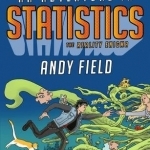
An Adventure in Statistics: The Reality Enigma
Book
Shortlisted for the British Book Design and Production Awards 2016 Shortlisted for the Association...
